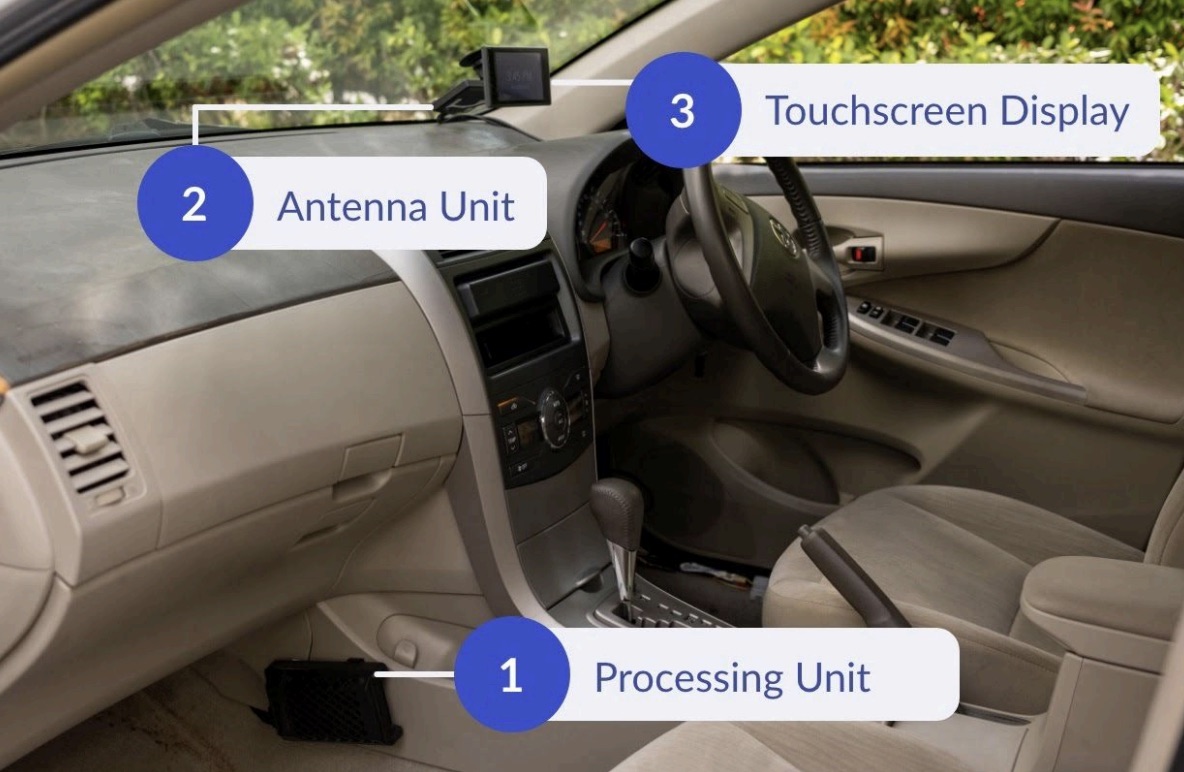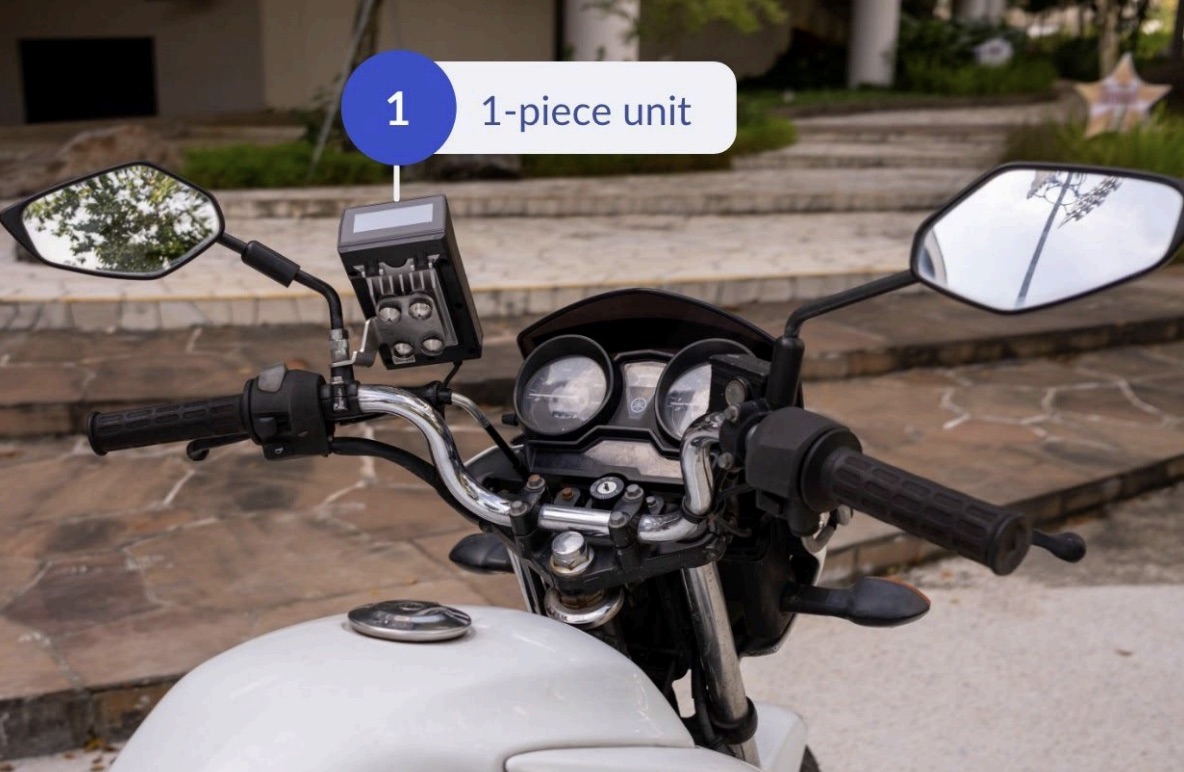The electronic road pricing (ERP) system as we know it will very soon be replaced by a new Global Navigation Satellite System (GNSS)-based ERP system.
After a two-year delay, motorists in Singapore can finally expect the implementation of the new on-board unit (OBU) under the next generation ERP system.
The Land Transport Authority (LTA) will begin the installation of OBU in phases from November 2023, starting with fleet vehicles.
To better ease you into the new system, here's all you need to know about the ERP 2.0's OBU installation.
What's the new OBU?
The ERP 2.0 is supported by the Global Navigation Satellite System (GNSS) technology.
With that, the current in-vehicle unit (IU) will be replaced with the new OBU, which provides value-added services for motorists, such as advance alerts on charging locations and traffic updates.
 Photo from LTA
Photo from LTA
OBU comprises three components – a processing unit for payment transactions, an antenna that communicates with ERP, carpark gantries and GNSS, and a touchscreen display.
The display notifies motorists about ERP and payment information, as well as provides other information such as locations of nearby Silver Zones, speed cameras and bus lanes.
According to LTA, the display is also expected to support additional features like real-time traffic alerts and payment of roadside parking and tolls at checkpoints when all vehicles have transitioned to ERP 2.0.
 Photo from LTA
Photo from LTA
For motorcycles, the three components are integrated into a single-piece OBU.
It includes a processing unit and a small touchscreen for riders to toggle through different functions. It will be mounted on motorcycles’ handlebars.
Those who wish to opt out of installing the touchscreen display may do so, and access key OBU information via compatible mobile applications on their smartphones instead.
However, LTA is strongly encouraging motorists to install all three OBU components so that they are able to access the full range of features, such as paying for roadside parking.
Do I need to pay for the OBU?
The good news is that OBU will be provided free of charge to all eligible Singapore-registered vehicles during the installation period.
However, cars that are due for mandatory deregistration during the installation exercise are not eligible.
When will OBU be installed?
From Nov. 1, 2023, fleet vehicles for motorcycles and all other vehicles will have the OBU installed progressively.
Fleet vehicles are those registered to either a company or an organisation. They include public buses and taxis.
Motorists should look out for a notification via a letter, an email and/or an SMS from LTA to know when it is their turn to schedule an installation appointment. Instructions on how to do so will also be in the notification.
Another thing to note is that installation is free only if it is completed within the two-month period stated in the notification.
All new vehicles will have OBU installed from the first quarter of 2024.
Will there be a change to charging framework?
The short answer — no.
LTA stated that OBU is designed to work with existing systems, including ERP and parking gantries.
As such, there will be no change to how motorists are currently charged for ERP during the transition period.
While ERP 2.0 support distance-based charging through its GNSS, LTA has "no immediate plans" to charge motorists based on the distance they travel.
Will ERP gantries be removed?
ERP gantries will only be removed gradually after the installation period.
They will remain during the course of the installation to ensure a smoother transition for motorists.
LTA is currently looking at visual markers or signage to indicate ERP charging locations.
These locations and their applicable ERP charges will be updated to motorists through the OBU.
How will this change affect parking?
For now, motorists can continue to use parking.sg to pay for parking digitally.
Roadside Electronic Parking (REP) is a future functionality of the ERP 2.0 system and will be enabled once all vehicles have transitioned to the new system.
Do note that the REP function is only available with the Touchscreen Display. That's because REP will require motorists to confirm location is correct via the touchscreen display before the parking session commences.
The parking session will automatically end when motorists drive off with the use of OBU. This means that motorists can save the hassle of estimating their parking duration, extending or ending their session.
Those who decide to opt out of the Touchscreen Display can continue to use Parking.sg to pay for your parking.
Motorcycles fitted with the single-piece OBU can access to REP functions.
How will your privacy be ensured with the new system?
If you are concerned about your privacy with the implementation of the new system, LTA has ensured motorists that strict safeguards for data privacy have been put in place.
ERP 2.0 has been designed to handle charging transactions and data securely, they said.
As for collating data for traffic management and transport planning, LTA will only use anonymised or aggregated data.
Meanwhile for vehicle specific data, LTA will only use it for payment, charges, and enforcement, such as against non-payment of ERP charges.
What's next?
The OBU exercise is expected to be completed by end-2025.
More details about the installation for individual vehicles will be also be announced early next year.
Motorists, keep your eyes peeled for your notification letter and be prepared for changes to your driving journeys.
Read here for more information.
Here's another article that may interest you if you drive:
Top photos from LTA and via Google Maps

If you like what you read, follow us on Facebook, Instagram, Twitter and Telegram to get the latest updates.



